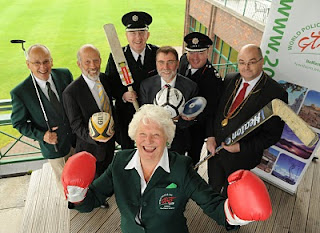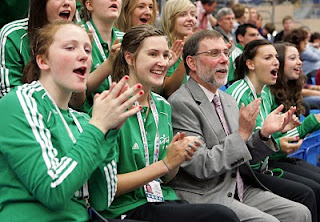This is a platform piece I wrote this week for the
North Belfast News.
Building Tourism in North Belfast
At this time when countries around the world are facing economic difficulties, it is important to identify those areas in the economy where we can increase activity and employment.
Some time ago I wrote a ‘platform piece’ about creative industries and this time I want to comment on another potential growth area, tourism. Visitors stay in hotels, spend money in shops, and eat in restaurants. They put money into the local economy and they create employment.
People are probably not going to come to Ulster for our sunshine. The weather is one area where we cannot compete with Spain or Italy.
However we do have real tourist opportunities and one of them is undoubtedly cultural and historical tourism. One obvious example in Belfast is around the story of the Titanic and our shipbuilding and industrial heritage.
But if we want to bring more visitors, encourage them to spend more money, and hopefully get them to come back again, we need to build the tourism product, the things that visitors can see and experience.
At present Belfast City Council is preparing a ‘tourism strategy’ and councillors have been meeting with council staff, commenting on the draft document and contributing ideas to it.
It has been an interesting process and it has confirmed that if we work at it we can strengthen the tourism product. However the process has also highlighted a number of other things.
The first was that during the process councillors from West Belfast really built up the West Belfast element in the strategy. Fair play to them, they were merely looking after the interests of their area, but it resulted in a draft document that was rather imbalanced. That is unacceptable we need every part of the city, including North Belfast, to get a fair share in the strategy and in the work that flows from it.
At the Development Committee I and my DUP colleagues asked for the draft document to be taken back to the party groups for further comment and eventually that was agreed. We needed an opportunity to do what West Belfast had already done and build up the Northern Belfast content. That has now happened.
The second was that during that process I was encouraged to see the potential that North Belfast has as regards tourism. For example, with maritime heritage, the Titanic was built in East Belfast but shipbuilding started in Belfast in 1792 on the north side of the river.
Moreover we do not need to build a heritage centre. We already have historic and authentic things to see. The old graving docks are still there at Clarendon Dock and the Belfast Harbour Office is a building that should certainly be on the tourist trail.
We have the potential and we have the opportunity. Let’s make sure that we take it.
 It was through the theology of John Calvin and the preaching of John Knox that the Church of Scotland was established as a Presbyterian and Protestant Church and the Presbyterian Church in Ulster is the eldest daughter of the 'mither kirk' in Scotland.
It was through the theology of John Calvin and the preaching of John Knox that the Church of Scotland was established as a Presbyterian and Protestant Church and the Presbyterian Church in Ulster is the eldest daughter of the 'mither kirk' in Scotland. The Ulster-Scots settlers of the 17th century introduced Presbyterianism into Ulster. They brought Scottish Presbyterian ministers with them and within a few years the Sixmilewater Revival embedded Presbyterianism in east Ulster. The arrival of a Scottish Covenanter army in Ulster in 1642, to defend the Ulster-Scots settlers, led to the creation of the first Presbytery in Ulster and thereafter Presbyterianism was a powerful influence in the shaping of modern Ulster.
The Ulster-Scots settlers of the 17th century introduced Presbyterianism into Ulster. They brought Scottish Presbyterian ministers with them and within a few years the Sixmilewater Revival embedded Presbyterianism in east Ulster. The arrival of a Scottish Covenanter army in Ulster in 1642, to defend the Ulster-Scots settlers, led to the creation of the first Presbytery in Ulster and thereafter Presbyterianism was a powerful influence in the shaping of modern Ulster.
























